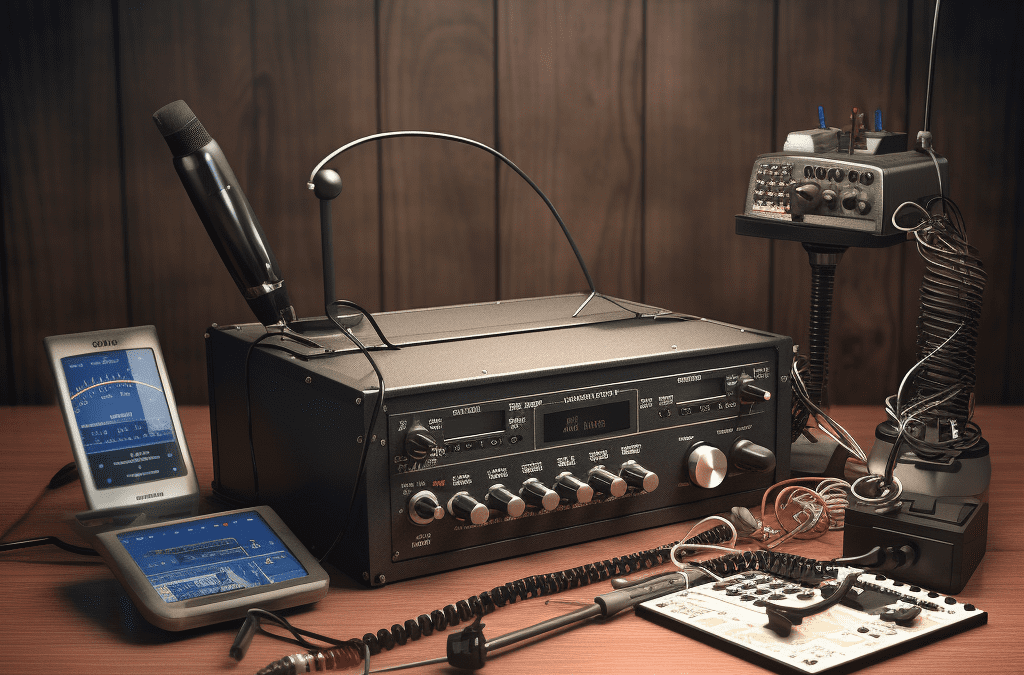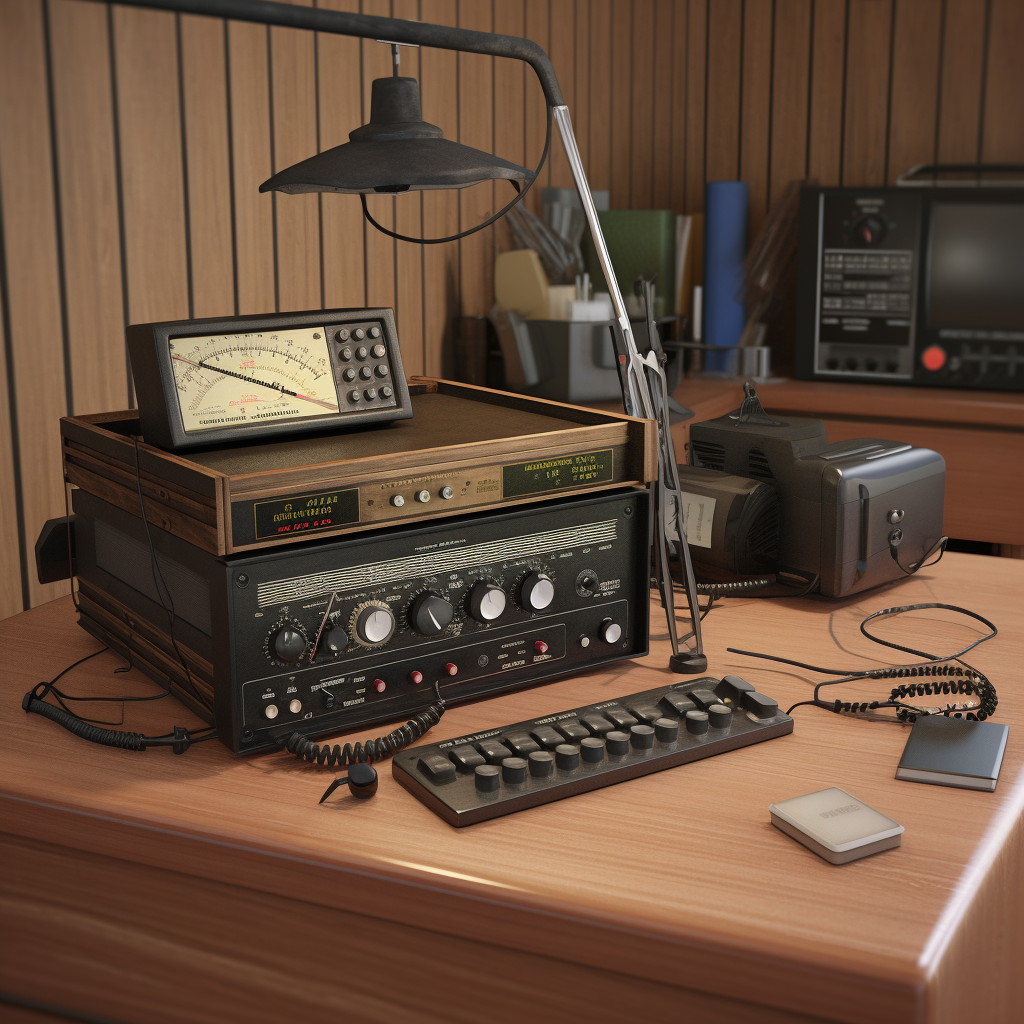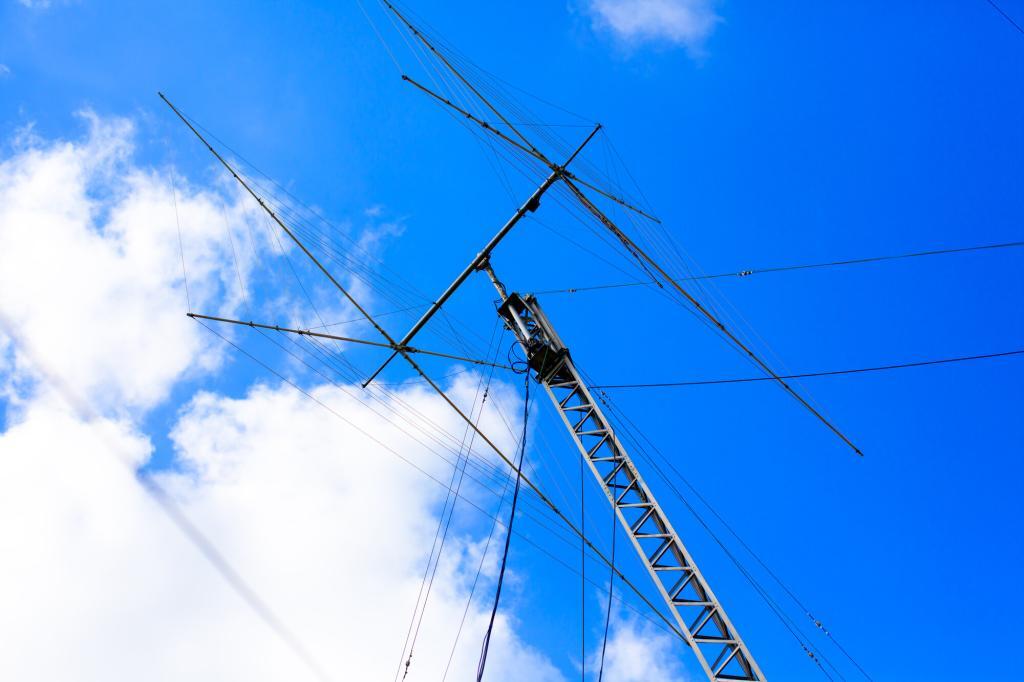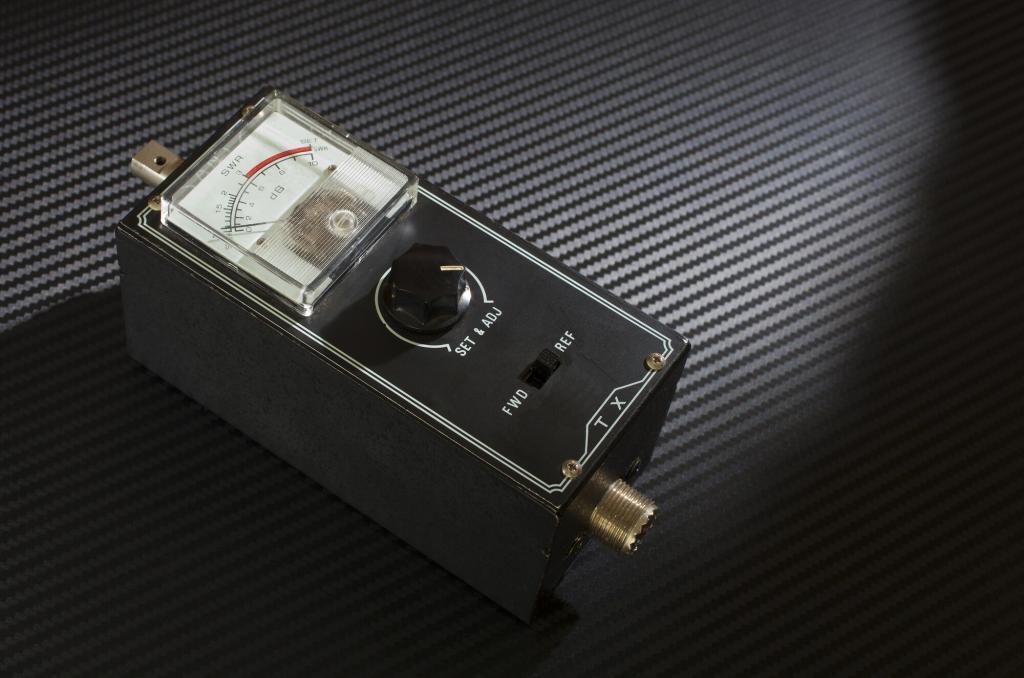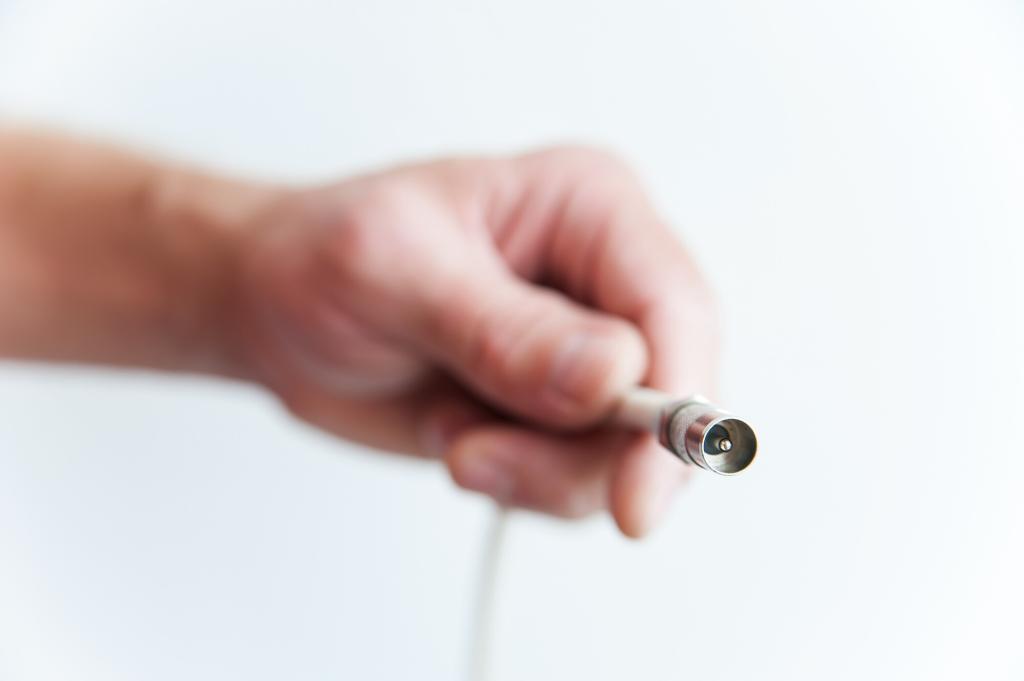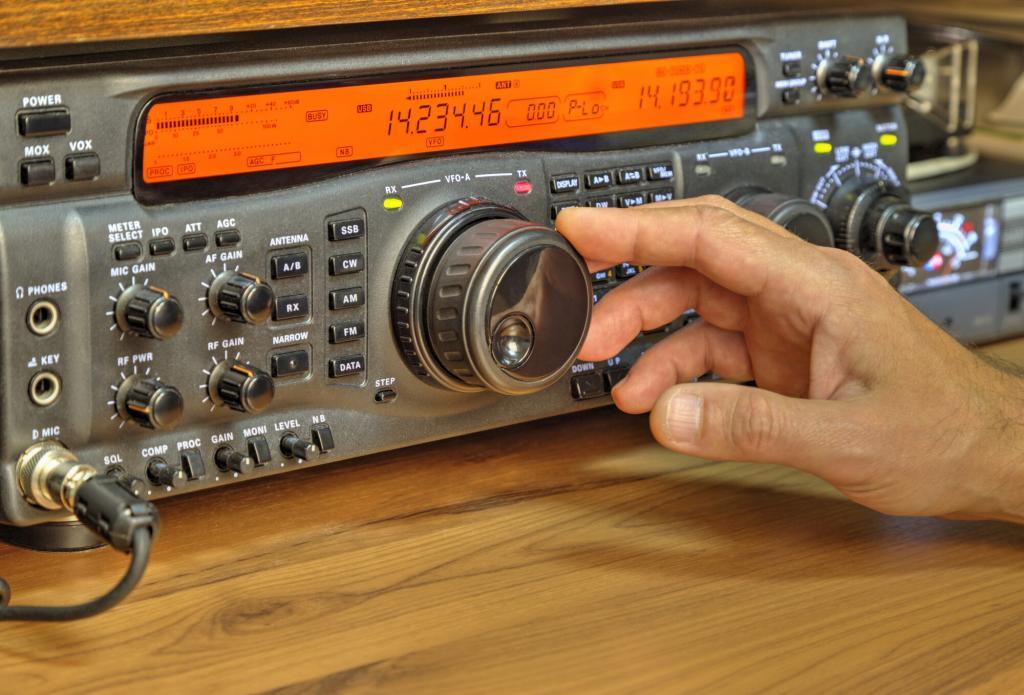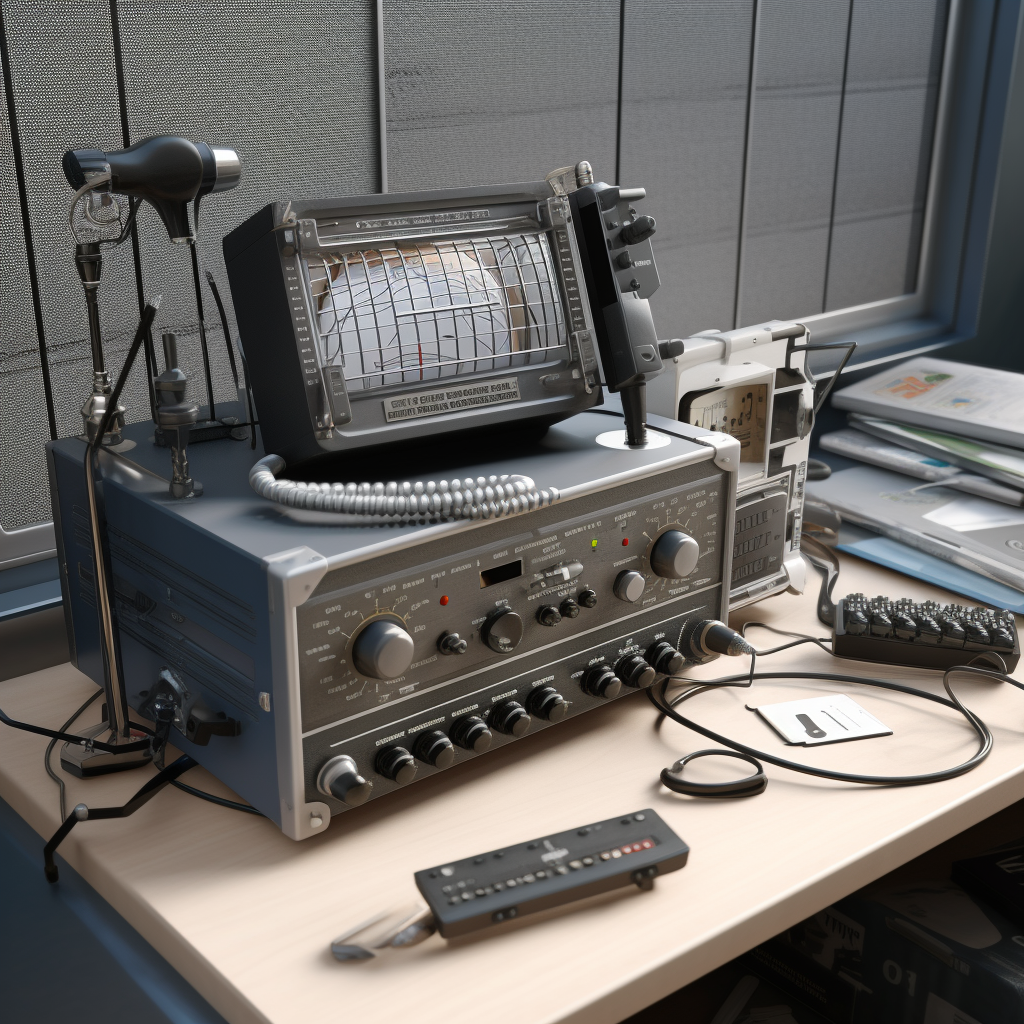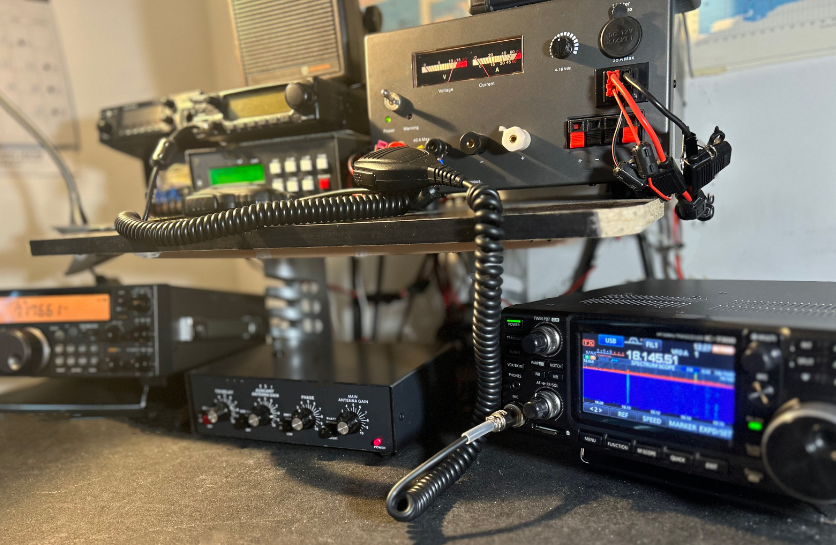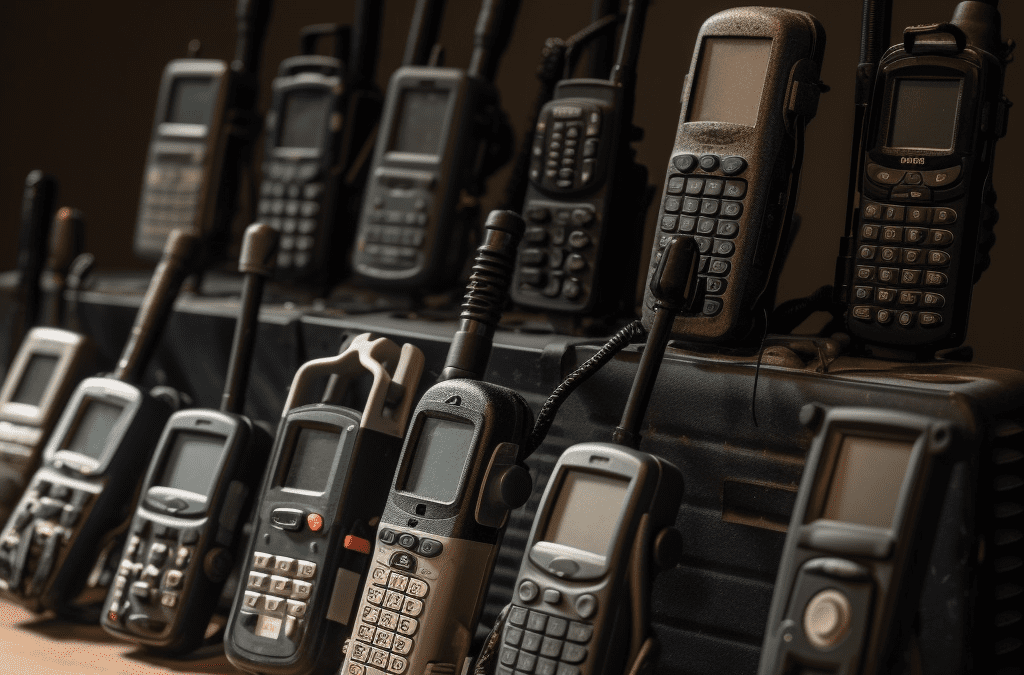
12 Best Survival Walkie Talkies For Preppers 2023
Picture yourself deep in the wilderness, miles away from civilization, and suddenly find yourself in a life-or-death situation. Your heart races as you realize your phone has no signal.
These situations make you wish you had a survival walkie-talkie on hand.
A reliable walkie-talkie is a non-negotiable addition to your survival kit. Professional guides and experienced adventurers know all too well the value of a good walkie-talkie.
They also provide access to vital weather updates and a lifeline to emergency services when you need them most.
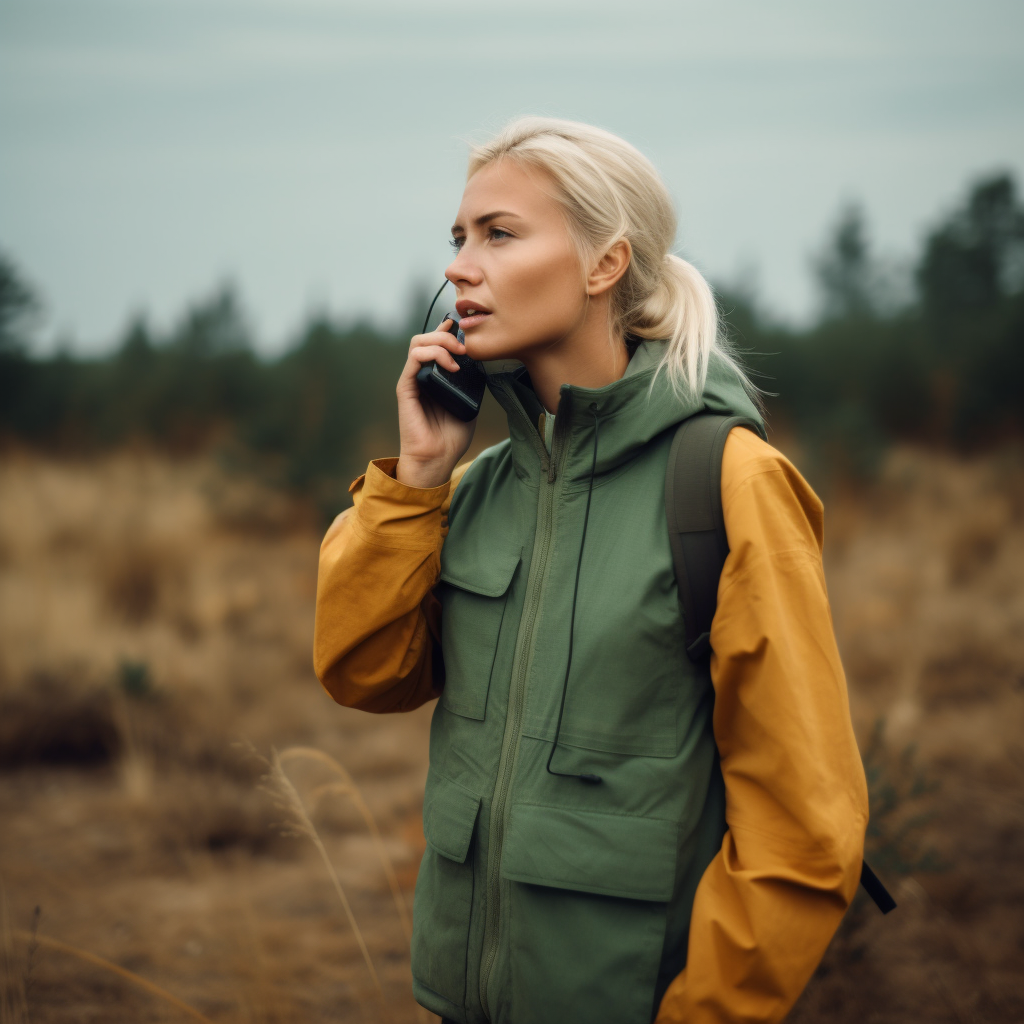
In a world of uncertainty, having a reliable survival walkie-talkie by your side can make all the difference in staying connected and safe during emergencies.
But with so many options available, how do you choose which is right for you?
Fear not! We’ve done the research and compiled a list of the top 10 walkie-talkies that will keep you connected with your group when it matters most.
Our Top Picks For The Best Survival Walkie Talkies For Preppers
In This Guide
- Benefits Of Having Walkie Talkies
- Walkie Talkie Buyer’s Guide
- How To Use a Walkie Talkie
- Walkie Talkie Lingos
- FAQs

The 12 Best Walkie Talkies For Preppers
- Decent range and reception
- Great customer service
- Easy to use
- Weak lanyard
Topsung M880 walkie talkies are built to keep you connected when it matters most. Boasting 22 main channels and 121 privacy codes, these walkie talkies offer an impressive range of up to 1/4/16 miles so you’re never out of touch.
With a standby time of 3-4 days on just 3 AA batteries, these lightweight, palm-sized devices (2.9 oz) are packed with advanced features.
It has hands-free function (VOX), keypad lock, LCD screen with backlight, belt clip, earpiece jack, adjustable power, and volume, and durable, eco-friendly materials (ABS).
As icing on the cake, it also comes with the latest FCC certification and a 30-day replacement guarantee — a lot of bang for your buck.
- Affordable
- Easy to program
- Great battery life
- Belt clips aren’t durable
When it comes to cheap yet quality handheld amateur radios, Baofeng is a household name. This Baofeng walkie talkie is designed for reliability and convenience.
Featuring a 1500mAh rechargeable battery, you can continuously use it for all day, with 2-4 days of regular operation and 5-7 days of standby time. You can also charge it easily with options like power banks, PC chargers, or car chargers.
With 16 pre-programmed channels, each offering 50 CTCSS and 105 DCS tunes for private communication, these walkie talkies are perfect for any situation, even in challenging terrains.
The lightweight, slim design is ready to use right out of the box, and the package includes all the accessories you’ll need. Although the quality might not rival high-end models, you’ll get more than what you paid for at just $30.
Rest assured, these walkie talkies have passed the FCC certification and come with a 30-day money-back guarantee, a 12-month warranty, and 24/7 email support.
- Lightweight and easy to use
- Durable build
- Convenient holster clip
- Short range
If you’re looking for a pocket-sized walkie talkie with a lightweight build at an affordable price point, consider these on for size. It’s as thin as a cellphone, making it easy to carry, perfect for long adventures.
It has a unique belt clip design for quick removal and installation. The VOX hands-free function keeps your hands available for other tasks.
There’s also USB charging, fast charging, automatic power-saving, and low battery reminders.
Ideal for commercial events and outdoor activities, the RT22 is a practical addition to your emergency kit, taking up minimal space while leaving room for other essential items.
Their size takes up very little space in your emergency kits, leaving more room for other important items you might otherwise not be able to take with you.
This is an affordable, full-featured radio that provides excellent sound quality and range. It’s definitely not a toy, but it won’t break the bank either.
- Excellent range
- Lots of channels
- Easy to use
- Default settings are difficult to turn off
If you’re on a budget but still need a walkie talkie that delivers, this is the one for you. You’ll be surprised by its price and array of features in this little device.
The MOICO Long Range Walkie Talkie has an amazing 5-mile range in open fields and a decent 1.2-mile maximum range in urban areas. That should be enough to talk to your friends and family if you’re not looking to stray too far apart.
What sets this walkie talkie apart is its 22 FRS channels and 99 sets of CTCSS tones, providing a whopping 2,178 combinations to ensure your conversations remain private. That’s a lot of privacy for such an affordable device!
There’s also a one-to-one or one-to-more communication function that allows multiple walkie talkies to communicate on the same channel. It also comes with VOX-Hands Free Function, with three sensitivity levels for hands-free operation.
- Heavy-duty build
- Built-in flashlight
- Excellent long-distance range
- Radius range may diminish depending on the terrain
The T460 walkie talkie boasts an impressive 35-mile mountain-to-valley and an impressive 2-mile urban neighborhood range.
Real-life ranges will depend on how much obstruction or interference is around, but it’s nice to have that three-mile potential.
The real-time weather updates via the weather channel and weather alerts are great at preparing you for all weather scenarios. It also has 22 channels and 121 privacy codes, so finding an available channel should be a breeze.
The iVOX/VOX function serves as a speakerphone, allowing hands-free communication in any scenario. Powered by NiMH rechargeable batteries, you can enjoy around 8.5 hours of use or simply pop in 3 AA batteries for up to 21 hours on the move.
The built-in LED flashlight is a thoughtful addition, coming in handy when navigating in the dark.
- Eco-smart design consumes less power
- Excellent battery life
- Heavy-duty build
- Weak flashlight
With 22 channels, 121 privacy codes, and 2,662 combinations, you’ll easily find an available channel for clear communication. This walkie talkie features a communication range of up to 35 miles. But that depends on terrain and conditions.
The weatherproof IP54 rating and built-in flashlight ensure peace of mind during evening adventures, emergencies, or power outages.
Stay updated as this radio provides 11 weather channels, including seven NOAA channels. Additional features include 20 call tones, a keypad lock, a talk confirmation tone, a low battery alert, and an eco-smart design for less power consumption.
It’s also compatible with other FRS/ GMRS (General Mobile Radio Service) radios and powered by dual power options.
- Portable
- Comes with all attachments you need
- Can run on batteries or be plugged into your car
- Range depends on the antenna you use
If you’re looking for a radio that lets you access all 40 CB radio channels, stay informed about road conditions, and receive NOAA weather alerts with crystal-clear communication, this is the one for you.
You can get improved CB radio transmission and reception with the Soundtracker System, which filters through 90% of noise and optimizes signal transfer.
It also features a built-in NOAA Weather Radio Channel that helps you stay prepared with 24-hour updates on weather, emergencies, and hazards.
You can also monitor two pre-selected channels simultaneously with its Dual Watch feature. And with just one press, you can enjoy full coverage, accessing up to 40 CB radio channels.
The easy-to-use, illuminated multifunctional display ensures visibility in any lighting condition, while the handheld design makes it perfect for on-the-go adventures.
- Water-resistant
- Compact and lightweight
- Excellent radius
- Short battery life
This walkie talkie is your lifeline, providing license-free communication up to 28 miles away. With 22 FRS channels, 38 privacy codes, and crystal-clear sound quality, you’ll know your messages are heard and understood, no matter the situation.
The 38 CTCSS privacy codes offer up to 836 channel options, blocking unwanted eavesdroppers and ensuring your private conversations remain just that – private.
It also ensures long-range communication with minimal obstructions, so you can stay connected and feel secure.
The package comes with belt clips, rechargeable battery packs, a desktop charger, and a micro USB charging cable – everything you need for easy transport and charging on the go or during daily use.
And with compatibility across all Midland FRS walkie-talkies and accessories, this walkie talkie is a versatile choice for any communication scenario.
I only wish that it could last longer. It only has a 10-hour battery life which is unsuitable for emergencies.
- Waterproof
- Durable build
- Wide range
- Expensive for a single unit
- Some may get lemons
If you’re ever out on a marine adventure and your trusty radio happens to slip out of your hands and into the depths below, don’t worry—this one’s made to float and is here to save the day!
With its vibrant orange core, it’s easy to spot and retrieve, averting potential disaster. And with an impressive 6 watts of power, you’ll experience extended range communications, ensuring you can stay connected even in the most remote locations.
It has full access to NOAA weather channels, emergency alarms, and a JIS7/IPX7-rated submersible design. The noise-canceling microphone cuts through background noise, providing crystal-clear conversations.
Plus, this radio has you covered, whether navigating the waters of the USA, Canada, or international seas, providing maximum coverage to keep you connected and secure.
- Excellent battery life
- Shock-resistant
- Durable
- Belt clips can be flimsy
In a bustling hotel, retail store, or restaurant, where efficient communication is key to success, this radio emerges as the ultimate tool to keep your team connected and coordinated. It’s ideal for use in these demanding on-site applications.
It offers an impressive 25-floor range, with 22 preset channels with privacy codes for minimal interference.
Built tough, the DXFRS800 is shock-resistant and can withstand a 2-meter drop. Its anti-slip design guarantees secure handling, while the LCD keeps you informed of the radio’s status so you’re always in control.
With 18 hours of run-time, these radios are ready to keep up. The hands-free VOX operation allows your team to stay productive, while vibration alerts and auto squelch ensure that you won’t miss any crucial messages amidst the hustle and bustle.
- GPS support
- Great sound quality
- 3100mAh battery lasts long
- Expensive for one unit
With storage for an astounding 4,000 channels, 10,000 talk groups, and 200,000 contacts, you’ll never feel lost or disconnected.
The DMR-6X2’s built-in GPS, audio recorder, and backward compatibility with BTECH and Nagoya SMA-Female antennas and previous BTECH accessories make it a versatile and reliable tool for any task.
With this walkie talkie, you can stay ahead with upgradeable firmware and radio that supports various channel configurations. The ‘Digital Monitor’ feature even allows you to keep an eye on all available DMR traffic on your current channel.
Additional highlights like simple text messaging, imperial GPS display, and easy talk group access further enhance your communication capabilities. Plus, the radio’s support for various analog modes makes it adaptable to a wide range of situations.
And with a battery life of up to 35 hours on a single charge, you can trust this walkie talkie to be there for you through the most demanding circumstances.
- Easy to program
- Clear transmission
- Shoulder mics have a nice grip
- Terrain and buildings will limit the range
This high-power, long-range walkie talkie is built precisely for working in a demanding environment like construction sites or large-scale events.
With an impressive battery life of over 24 hours, you can count on this walkie talkie to last throughout your adventure. Its VOX-ready, emergency alarms and 50 non-standard CTCSS and 232 DCS codes ensure your team stays connected and protected.
Rain or shine, the IP67 waterproof speaker mic delivers clear and loud audio, while the rugged and durable body can withstand shocks, vibrations, and multiple 2-meter drops.
The IP67 waterproof speaker mic ensures clear and loud audio even in harsh weather conditions, while the rugged and durable body can withstand shocks, vibrations, and multiple two-meter drops.
These radios are specifically designed for large commercial environments and may not directly connect to other radio brands. However, if needed, you can contact the company for firmware assistance to ensure seamless integration.
I Already Have A Smartphone…
When phone signals fail, such as natural disasters, terror attacks, or nuclear fallout, your phone is as good as a paperweight. This is where survival walkie-talkies become indispensable.
Smartphones may be convenient, but their reliability can falter in extreme situations. As a survivalist, it’s important to have a backup communication method like a walkie-talkie.
Their radio signal-based operation doesn’t depend on mobile networks. This should give you uninterrupted communication in the most challenging circumstances.
With a frequency range reaching up to 12 km or more and the ability to connect to over 22 channels, survival walkie-talkies are perfect for emergencies.
Don’t leave your safety to chance — invest in a reliable walkie-talkie for your survival tool kit.
What Is A Walkie Talkie?

A walkie-talkie, also known as a two-way radio, is a handheld communication device that allows you to talk to others over radio frequencies without relying on cell networks.
It’s a push-to-talk device, meaning you can’t speak and listen simultaneously. Walkie-talkies have been around for decades, we used to use them all the time as toys when we were kids.
But they’ve become popular among outdoor enthusiasts, event organizers, and emergency responders due to their simplicity and reliability.
Benefits Of Having A Walkie Talkie
- Reliable communication: In areas with limited or no cell service, walkie-talkies provide a dependable way to stay connected with your group. This can be crucial during camping trips, hiking adventures, and indispensable in survival scenarios.
- Cost-effective: There are no monthly fees or contracts associated with walkie-talkies. Once you purchase the device, you can use it without incurring additional costs.
- Easy to use: With their push-to-talk feature and straightforward controls, walkie-talkies are user-friendly and accessible to people of all ages.
- Enhanced safety: In emergencies, walkie-talkies can help you maintain communication with your group or connect with emergency channels.
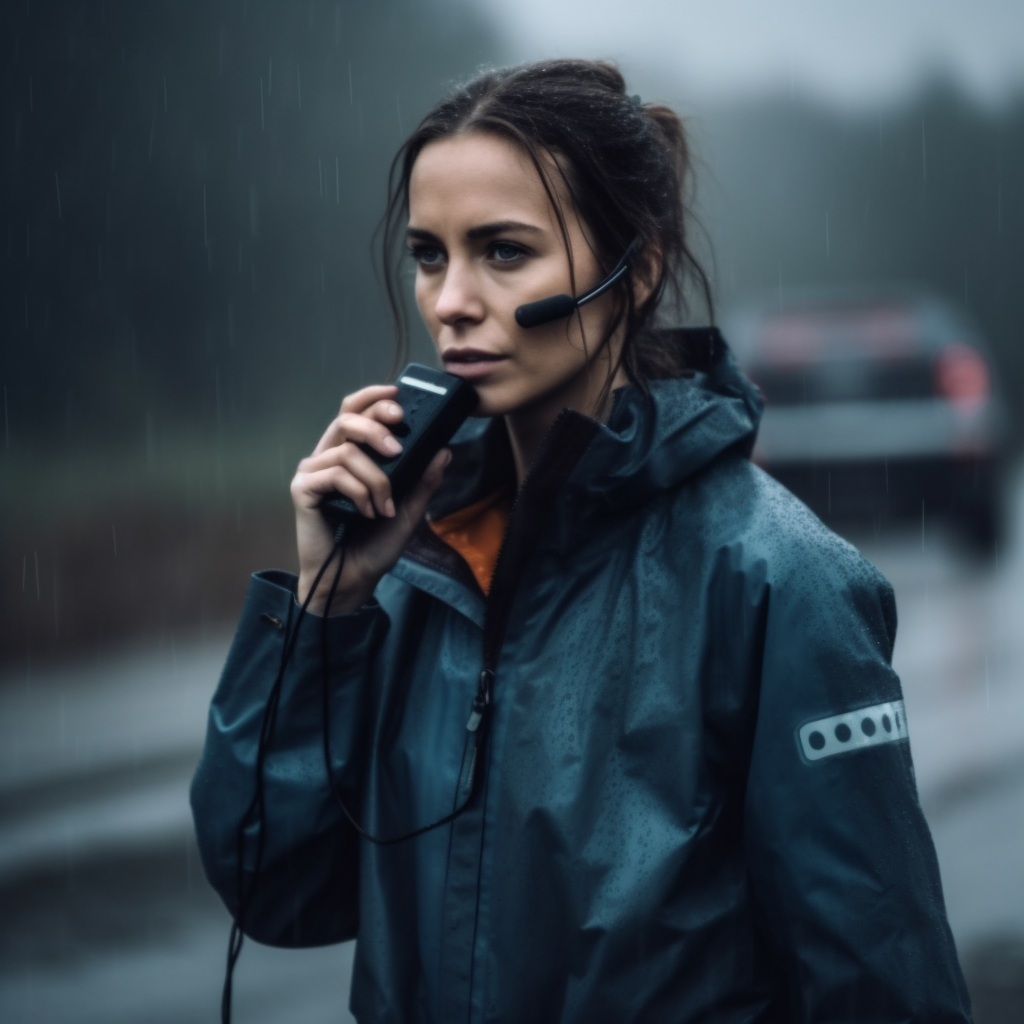
What To Look For In Buying A Good Two Way Radio
Range
In a true SHTF scenario, communication is vital. Look for a walkie-talkie with an impressive range, ideally one that can reach up to 20 miles or more.
Battery Type
One of the most crucial aspects of any walkie-talkie is its battery life. After all, a dead walkie-talkie is about as useful as a two tin cans attached to opposite ends of a string.
You may not always have access to batteries or power sources. So you’ll want a device with long-lasting battery life or one that uses rechargeable or replaceable batteries.
You can also opt for solar-powered walkie talkies. These can harness the power of the sun to recharge their batteries.
Remember that choosing a walkie talkie with a reliable battery ensures you stay connected, even during extended emergencies or off-grid adventures.
Durability and Weather Resistance
A rugged, water-resistant design is a must for any survival walkie-talkie. You need a device that can take a beating and keep on ticking, regardless of the conditions.
Channels and Privacy Codes
More channels and privacy codes mean less interference and clearer communication. In survival situations, you NEED to minimize confusion and maintain secure lines of contact. Secure channels are even more important if you’re up against enemies.
Emergency Features
It’d be good to look for a survival walkie talkie with additional features like weather alerts, SOS signals, or built-in flashlights to keep you informed and prepared during emergencies.
Hands-Free Operation
Look for a walkie-talkie with hands-free options like a headset or voice-activated transmission. This allows you to communicate while keeping your hands free to focus on other tasks.
How To Use A Walkie Talkie
1. Power up: Charge or insert fresh batteries and turn on your walkie-talkie.
2. Choose a channel: Select a communication channel for you and your partner(s).
3. Adjust volume: Set a comfortable listening level using the volume control.
4. Talk: Hold the “talk” button, speak clearly into the walkie-talkie, and release the button when done.
5. Listen: Keep the device near your ear to hear responses, and ensure your partner(s) are on the same channel.
6. Use etiquette: Say “over” when you finish speaking and avoid interrupting others.
7. Check the battery: Monitor battery life and recharge or replace as needed.
Walkie Talkie Lingos
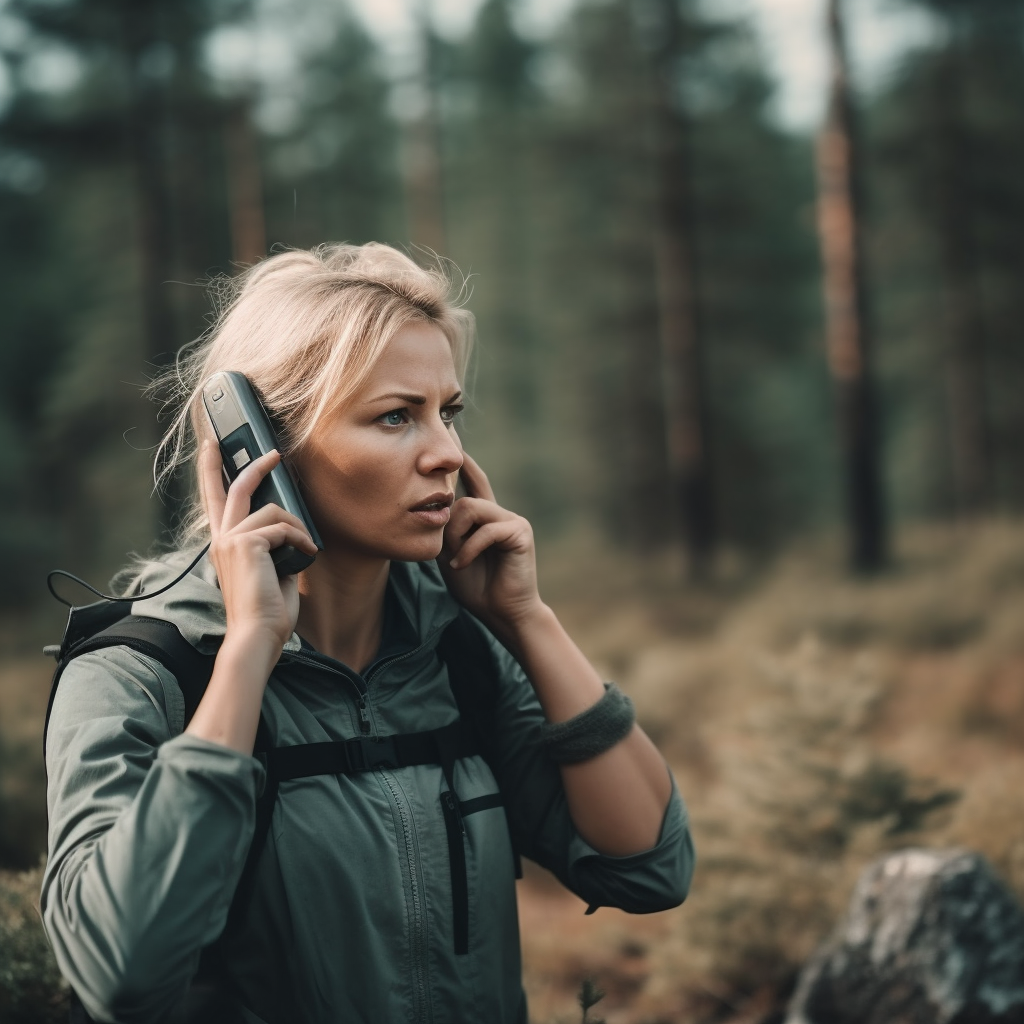
To ensure clear and concise communication, users often use specific lingo or phrases. Here’s a list of common walkie talkie lingos and their meanings:
1. Affirmative: Used to confirm or agree with a statement or request. It means “yes.”
2. Breaker/Break: A term used to interrupt or request to join an ongoing conversation, usually followed by the channel number or user’s identifier.
3. Copy: Acknowledgment that a message has been received and understood.
4. Go ahead: Permission to proceed with a message or action.
5. Negative: Used to disagree or indicate “no” in response to a question or request.
6. Over: Indicates the end of a transmission and that the sender is awaiting a response.
7. Out: Signals the end of a conversation without expecting a response, meaning the channel is now free for others to use.
8. Roger: Another way to confirm that a message has been received and understood, similar to “copy.”
9. Standby: A request to wait for further instructions or information.
10. Wilco: Short for “will comply,” indicating that the sender will follow the instructions provided.
11. 10-codes: A set of standardized codes used to represent common phrases, such as “10-4” for “message received” or “10-20” for “location.” Note that the use of 10-codes varies between different agencies and organizations.
12. Repeat: A request to resend the last message, often used when the transmission was unclear.
13. Say again: Similar to “repeat,” it is a request to have the last message repeated.
14. Clear: Indicates that the user has finished their transmission and is leaving the channel open for other users.
FAQ About The Best Survival Walkie Talkies
Are walkie talkies good for SHTF?
Walkie-talkies are great for SHTF situations, as they enable short-range communication without depending on cell networks. They’re especially useful in emergencies when other communication methods might be down.
What radios do preppers use?
Preppers typically use HAM radios, CB radios, or GMRS/FRS radios, as these provide longer range communication and access to emergency channels. These radios can help you stay informed and connected with others during crisis situations.
Would an EMP affect walkie-talkies?
An EMP could potentially affect walkie-talkies, as it can damage electronic devices. However, if you store your walkie-talkies in a Faraday cage or other protective enclosures, they might remain functional after an EMP event.
Wrap Up of The Best Survival Walkie Talkies For Preppers
Don’t wait until it’s too late to realize the importance of reliable communication in critical situations. Equip yourself with a tool that keeps you connected and informed when it matters most.
Whether you’re an avid hiker, a dedicated prepper, or just someone who wants to be ready for life’s unexpected twists and turns, having the right walkie talkie can be a game-changer.
Explore your options, find the perfect two-way radio, and confidently face whatever challenges life throws your way, knowing you’re prepared for the unexpected.













